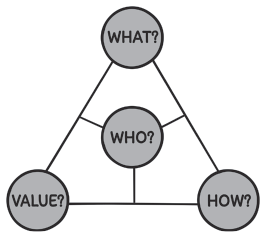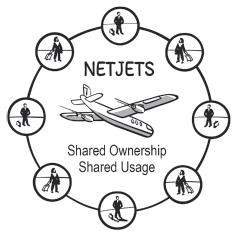Fractional Ownership
Timeshare makes for efficient usage

The pattern
In the case of Fractional Ownership, customers purchase only a part of an asset rather than its entirety. Thus, customers have to pay only a fraction of the full price. This gives them the possibility of purchasing products or services that they otherwise might not be able to afford (WHAT?). Fractional Ownership is usually implemented in the form of an association, where each buyer receives a certain amount of access based on the percentage of ownership. Typically, a company will oversee the maintenance of the asset as well as the rules and regulations governing the association (HOW?). Such a company profits from Fractional Ownership, given that dividing the total price of an object into smaller shares enables it to reach a wider circle of potential customers and the total sums received are larger than Direct Selling would have brought in (WHO?, VALUE?). Divvying up costs in this way can be especially valuable in the case of capital-intensive assets, which generally interest fewer customers. Another important advantage of Fractional Ownership is the more efficient use of assets when shared by several customers rather than owned by just one (WHAT?).

The origins
The origins of Fractional Ownership trace back to communist ideology and the practice of collective farming in early-20th-century Russia. One of the pioneering companies to bring this business model into the private sector was NetJets, which established Fractional Ownership of aircraft in the 1960s. Customers buy fractions of an aircraft, entitling them to a certain allotment of flight hours. They are not restricted to a particular aircraft type, but can use any of the company’s fleet of over 800 planes worldwide. By this means, NetJets guarantees its customers an available aircraft within 24 hours – a situation commensurate with owning a private aircraft oneself. Adopting this business model has allowed NetJets to create an entirely new market segment in the field of private aviation.
The innovators
Since its introduction, Fractional Ownership has also been embraced by other industries. The tourism industry, for instance, has developed timeshares. Customers buy the right to use a holiday home, typically a resort condominium unit, for an allotted period of time each year. Switzerland’s Hapimag was one of the innovators in this area. Founded in 1963, it is now one of the world’s leading timeshare providers. Customers who purchase Hapimag shares acquire the right to use one of over 56 resorts in 16 countries. Hapimag is responsible for maintaining the properties and managing reservations, for which it collects a yearly maintenance fee. Timesharing led to the introduction of an entirely new concept in the tourism industry, which proved to become one of its fastest-growing segments.
An innovative investment model based on Fractional Ownership is that of crowd investments in real estate. The logic behind this form of investment is that a management company buys a property and then sells shares to its shareholders. To put it simply, small-sized investors put their money together to become fractional owners of a large and lucrative building that most of them could not afford to buy individually. Crowdhouse, a leading real estate crowd-investment platform in Switzerland, enables investors to directly invest in real estate with less than US $100,000. Other crowdfunding platforms, such as the British platform Yielders, already accept investors with as little as £100.
Another investment model that promotes Fractional Ownership was introduced by Masterworks in 2017. Masterworks enables investors to become co-owners in art masterpieces. Comparable to investments in the stock market, the platform gives investors the possibility to invest in popular artworks created by famous artists such as Picasso, Monet or Warhol. At present, Masterworks is promoting a 1979 Warhol work stemming from the artist’s ‘Reversal’ series, acquired by the platform for US $1.8 million. Since the site actively attempts to sell paintings at a gain for its investors, Masterworks asserts that ‘similar’ works have enjoyed an 11.25 per cent internal rate of return. So far, investors are not allowed to sell their shares after the initial offering; thus, no profits accrue before Masterworks disposes of the Warhol at some point in the future.
A number of models of Fractional Ownership have been implemented in the manufacturing industry. Shared investments are starting to become popular in cases where economies of scale are effective and the market is not very large, or is highly specialised, but seldom-used machines nevertheless have to be bought. Since no standards have been established, the system depends on a high level of trust between the partners.
When and how to apply Fractional Ownership
Fractional Ownership works very well in industries where customers are willing to share assets. This business model pattern becomes viable and even appealing as assets increase in value. Classically, the pattern has been applied in the aircraft and real estate industries. If you choose to apply this pattern, you will be able to reach a larger customer pool and gain new customers who would not have been able to afford your product otherwise.
Some questions to ask
- Can we devise an appropriate sharing scheme that minimises the risks for customers when sharing assets?
- Is dividing ownership likely to make our product more affordable to customers?
- How do we best split usage rights for our products in respect of contracts and transactions?
- Have we included simple and robust exit clauses for those customers who wish to sell their ownership shares?

